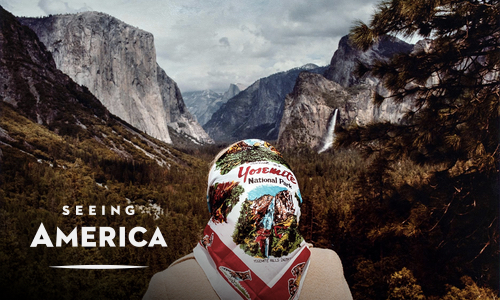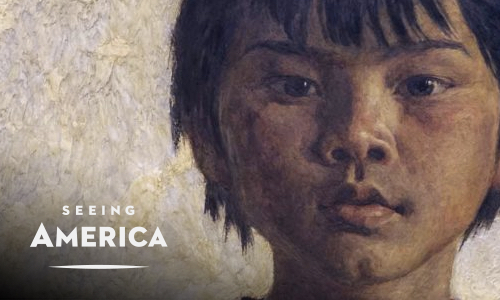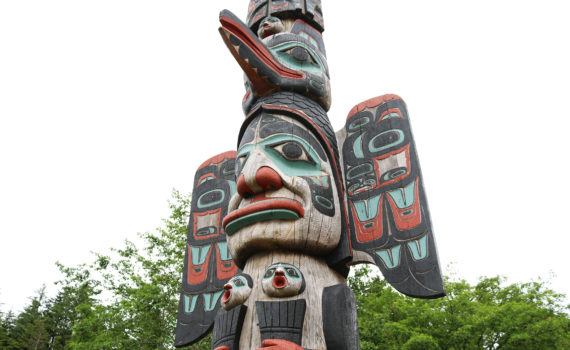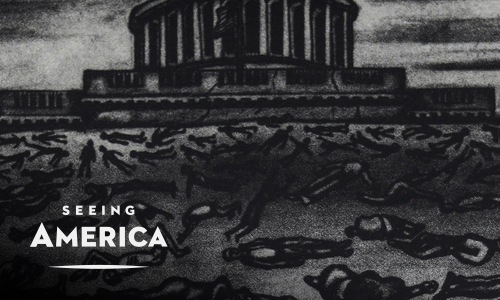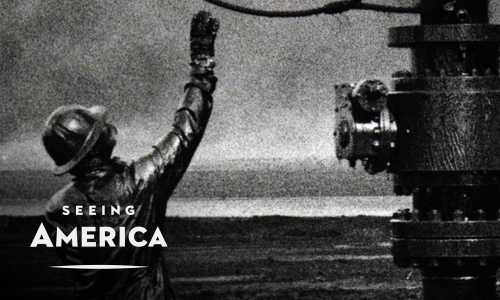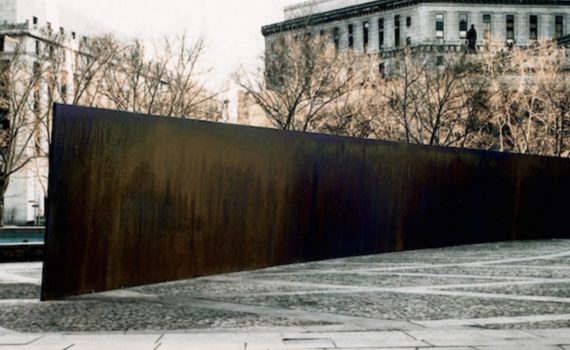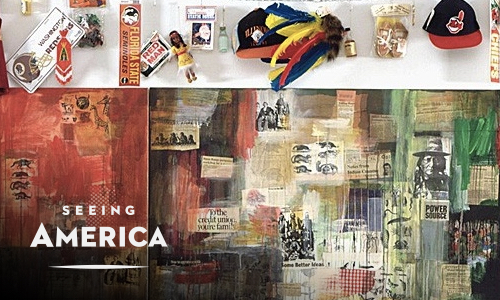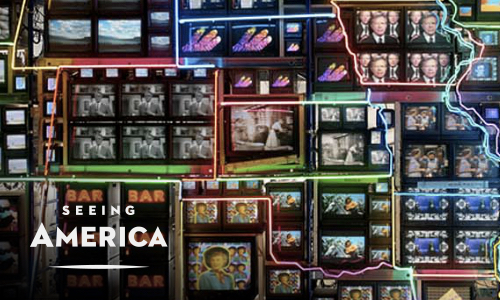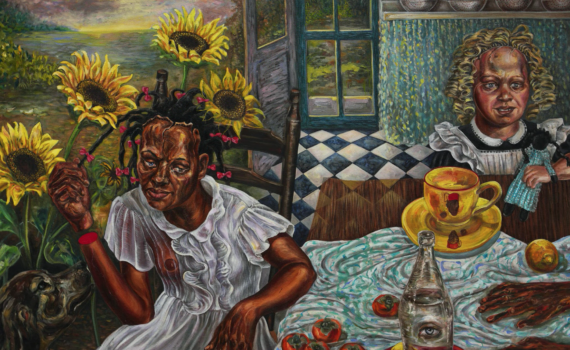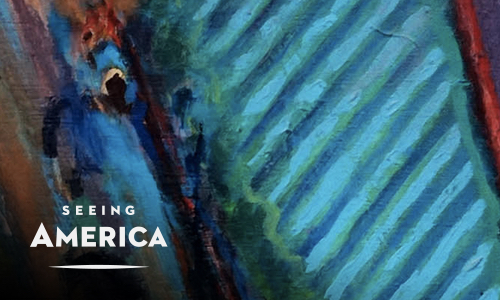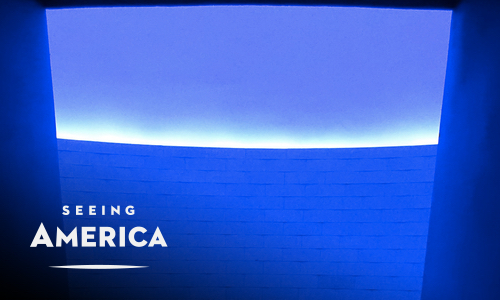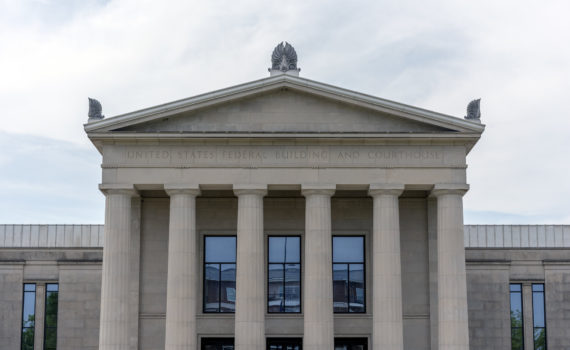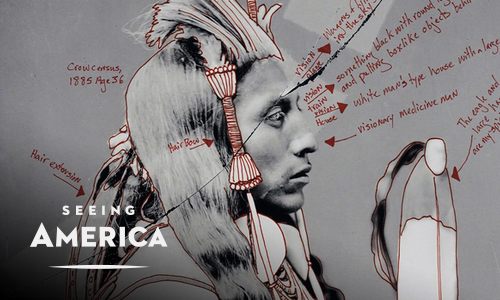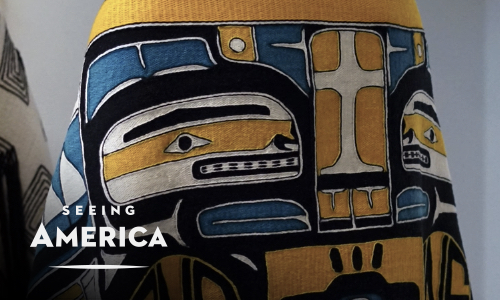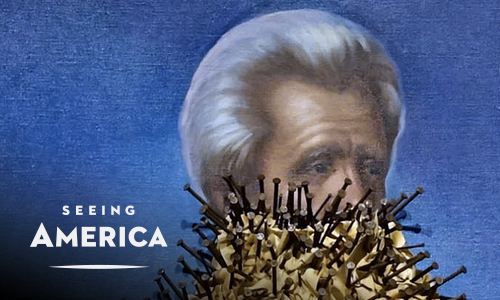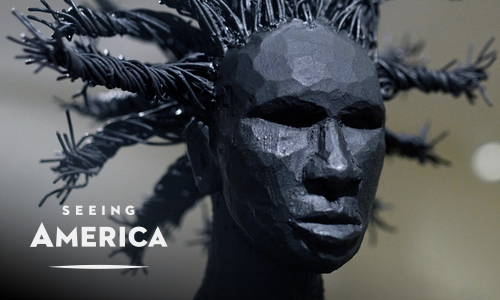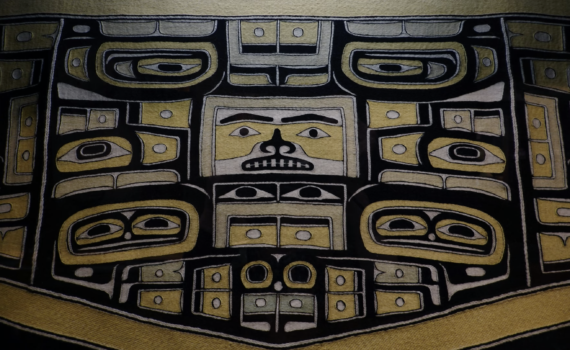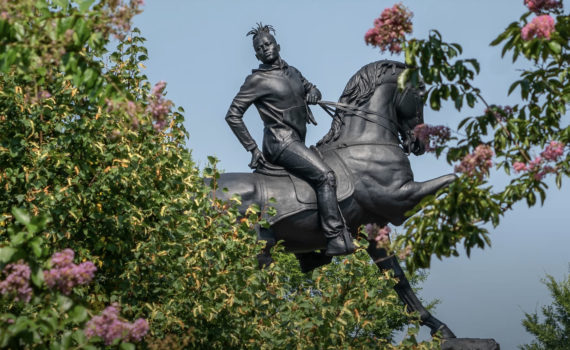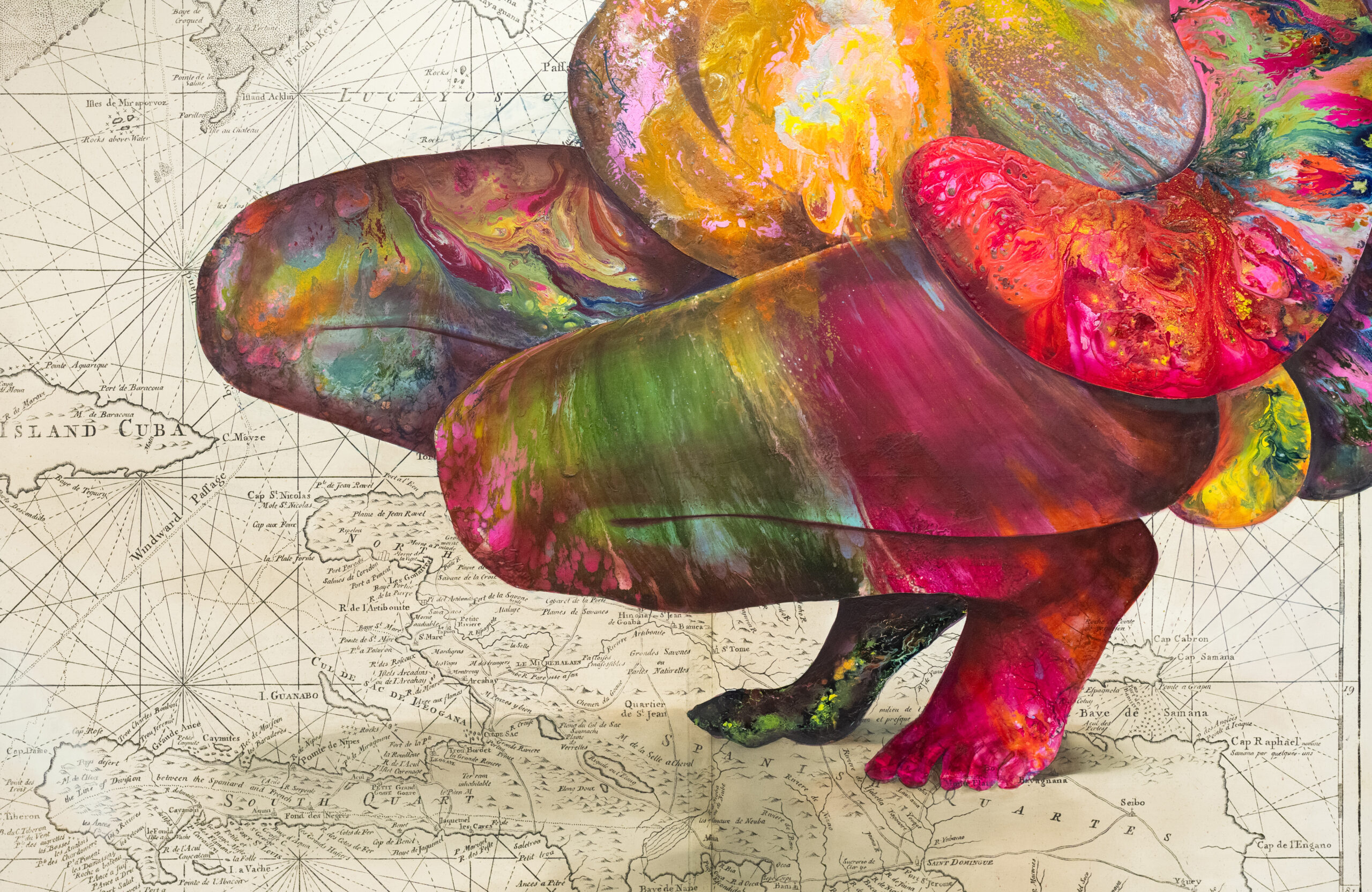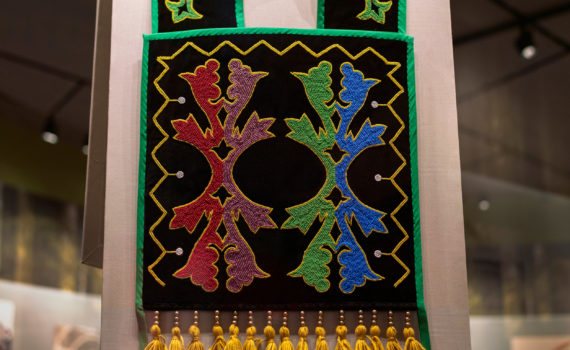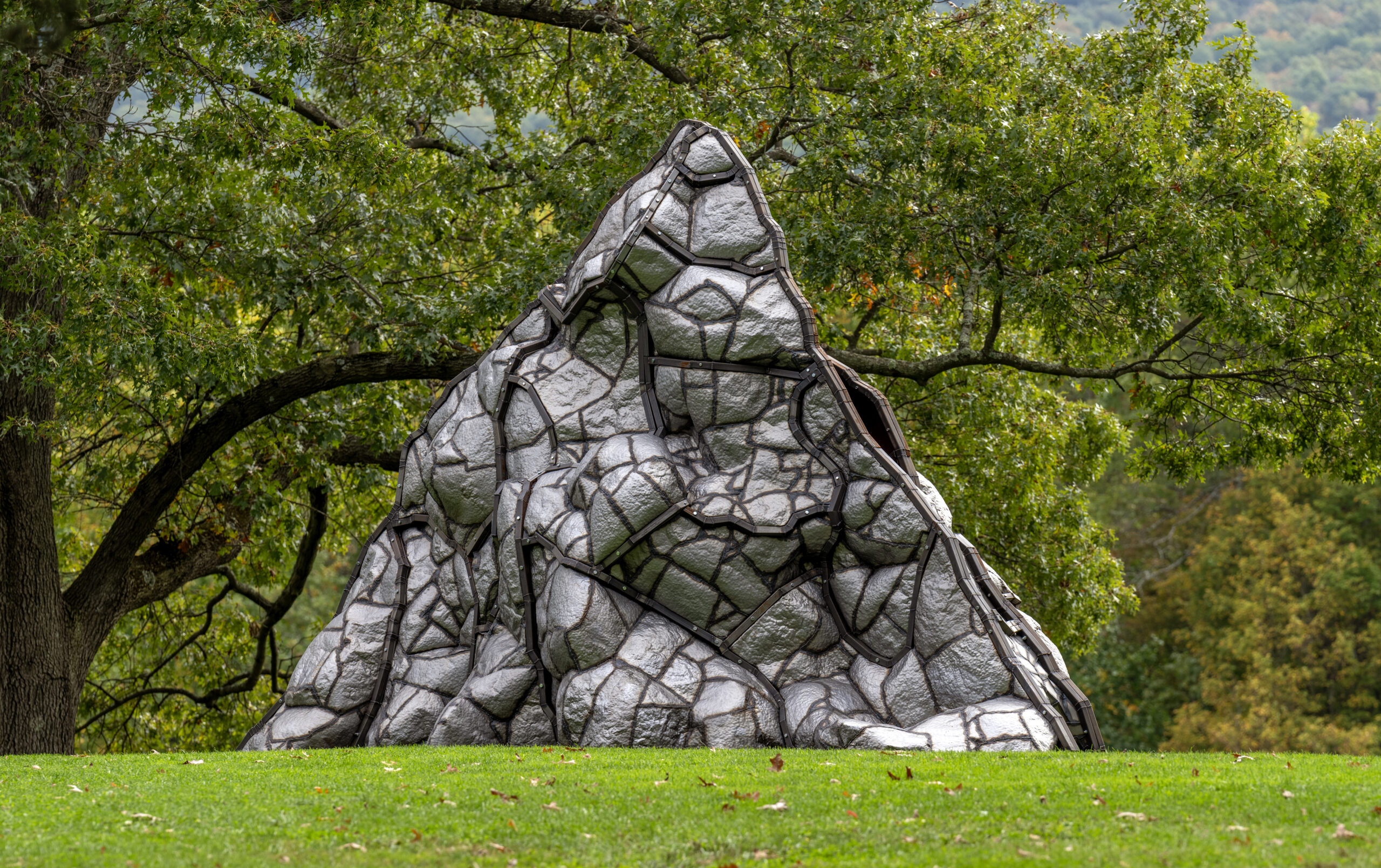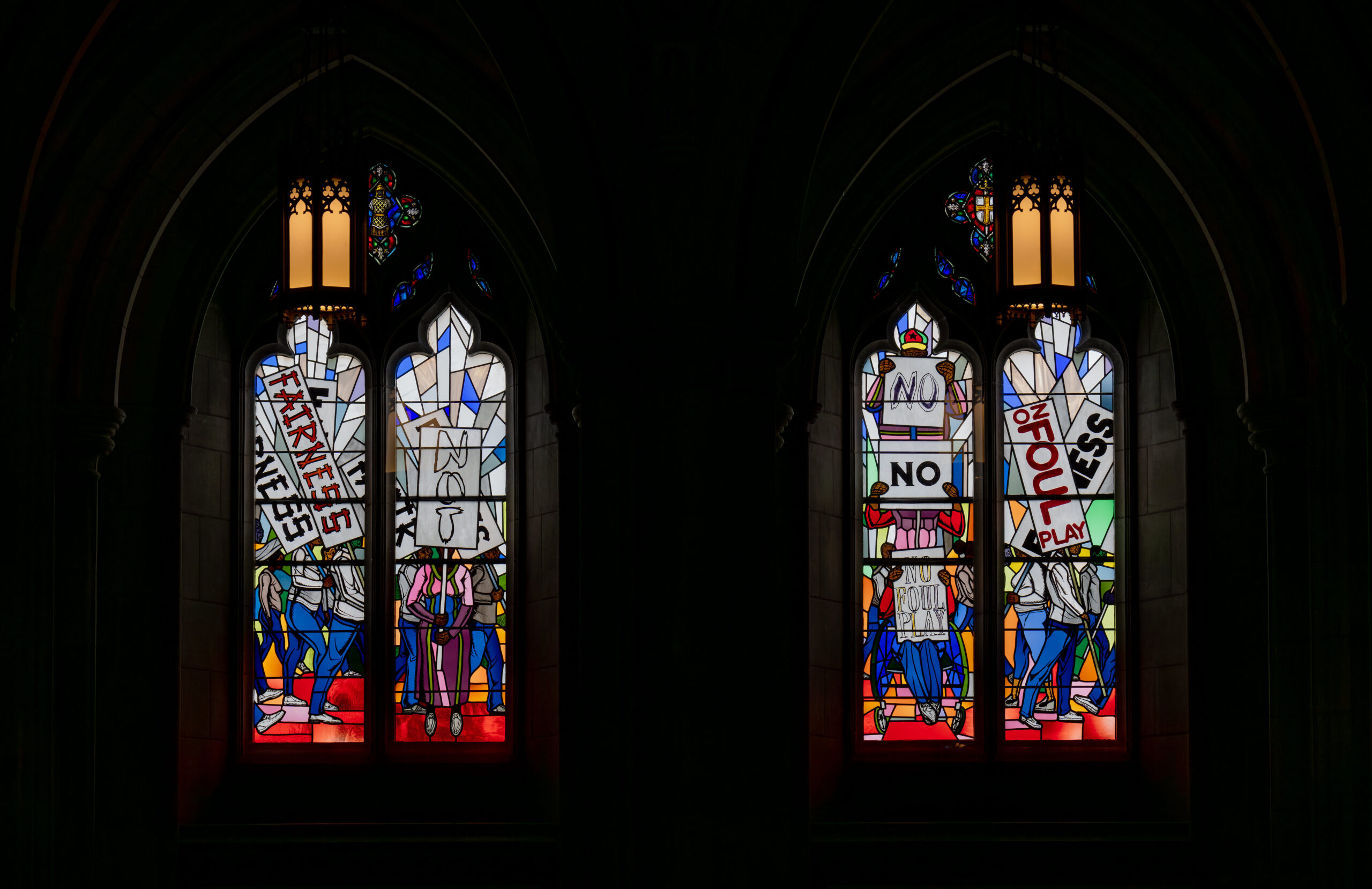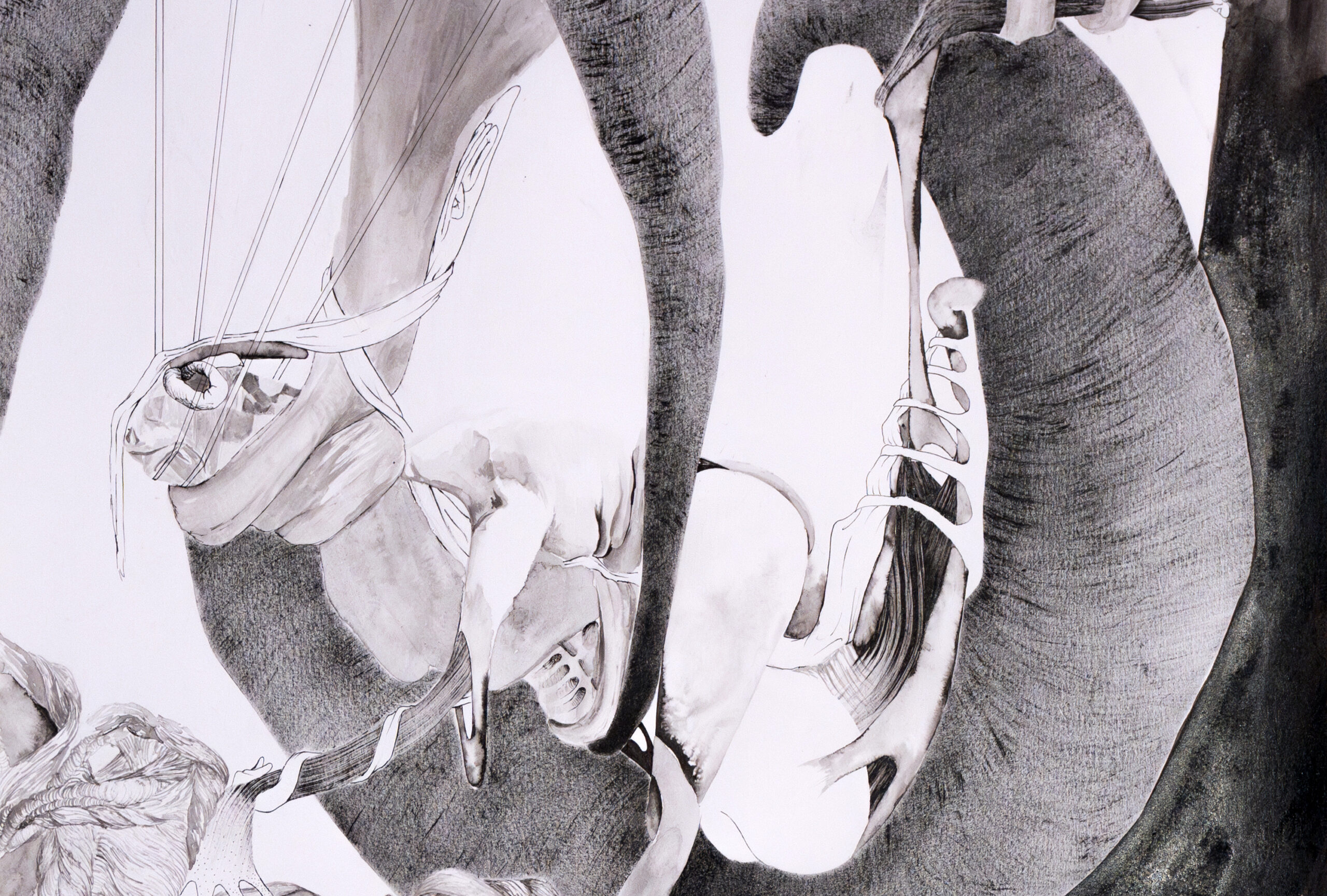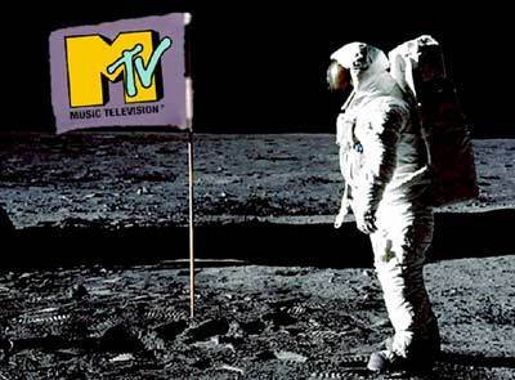On August 1, 1981, television viewers tuned in to video footage of a rocket launch and still photographs of an astronaut near a flag emblazoned with the letters MTV. “Ladies and gentlemen,” a crackly voice announced, “rock and roll.” Using authentic NASA images, Music Television announced its presence in unsubtle terms. This was a new era of home entertainment.
MTV charted new territory by breaking with narrative forms of programming and by targeting a growing youth market. Over the next decades, music videos and the channel that spread them would shape tastes, reflect cultural moments, and provide round-the-clock entertainment for Americans at home as well as expanding markets abroad as one of America’s globalized purveyors of culture.
This period saw revolutionary changes in mass media and information technologies that spread countless ideas, images, and products around the world. The dozens of channels introduced by cable television in the 1980s was eclipsed in the 2000s by seemingly unlimited content available streaming from apps. The internet made content choice and on-demand viewing at the touch of a button a basic expectation.
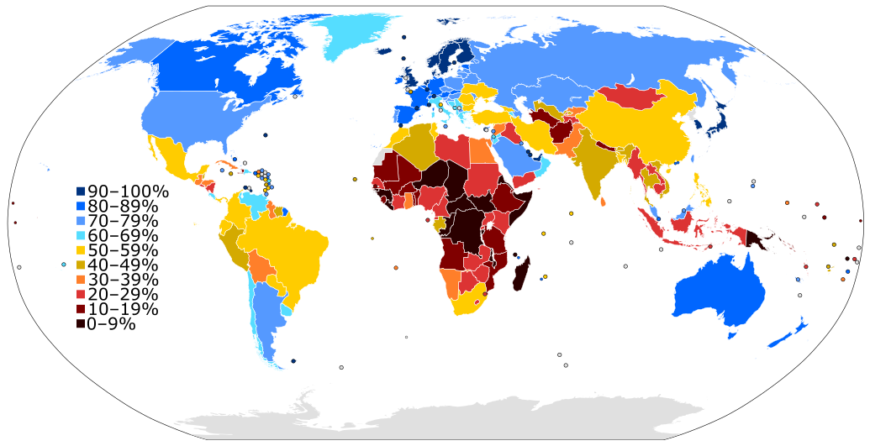
Map showing percentage of internet users relative to a country’s population in 2016 (credit: W163, BMacZero, CC BY-SA 3.0)
Americans connected wirelessly 24-hours a day to news, information, entertainment — and to each other — through computers, cellphones, tablets, and smart watches that fulfilled an early nineteenth-century call to “conquer space”—to connect the nation by roads and canals.
This spirit of interconnectivity transformed culture and society, with many Americans embracing diversity and equal opportunity for all. However, growing economic inequality between rich and poor led others to blame advances in civil rights. Multiculturalism was undercut by economic stagnation. Conservatism became an increasingly powerful political movement that, in conflict with progressive forces, polarized the nation into the twenty-first century.
Multiculturalism
In the 1980s and 1990s, the U.S. attracted numerous immigrant groups including Koreans, Vietnamese, South Asians, and from Latin America, Dominicans, Cubans, Mexicans, and Central Americans. At the same time, many already in the United States embraced and revived the traditions of their own heritages. While opportunities improved for people of various races, ethnicities, and genders, the fight for equal rights was not complete.
The African American middle-class grew with more seeking college education and benefiting from affirmative action programs. Backlash against these programs resonated throughout the 1980s. But the decade also saw the first serious bid of an African American for president when Rev. Jesse Jackson ran with a campaign meant to unite people across racial and ethnic lines.
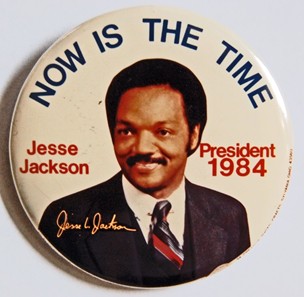
Campaign badge, 1984, metal, paper, and plastic (British Museum)
The first black president, Barack Obama, was elected more than two decades later. Reacting to stereotypes that not only influence public opinion, but led to life and death situations, the Black Lives Matter movement spoke out against police violence.
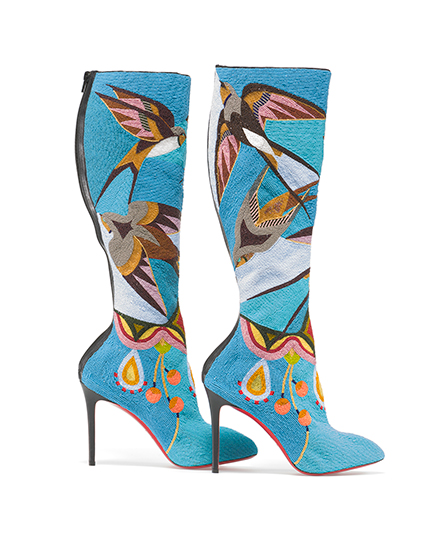
Jamie Okuma, Boots, 2013–14, glass beads on boots designed by Christian Louboutin (©Peabody Essex Museum, photo: Walter Silver)
Native Americans opened their own museums, and older museums of natural history, history, and art questioned the moral underpinnings of their collections, many of them stolen and sacred to people of other cultures. In 1990, the Native American Graves Protection and Repatriation Act established the right of tribes to ask for the return of museum objects. At the same time, residents of reservations reinvested in learning, preserving, and reviving native arts and languages.
But the 1990s also pushed the nation into “culture wars.” Conservatives reacted to the liberal advances of earlier decades, debating issues of race, homosexuality, abortion, gun control, and censorship. These debates played out in the media and politics, characterized by conservative Pat Buchanan as a war for the “soul of America.” At their core, the culture wars revisited long-held American debates about the role of government in controlling and legislating perceived immoral activities within the nation.
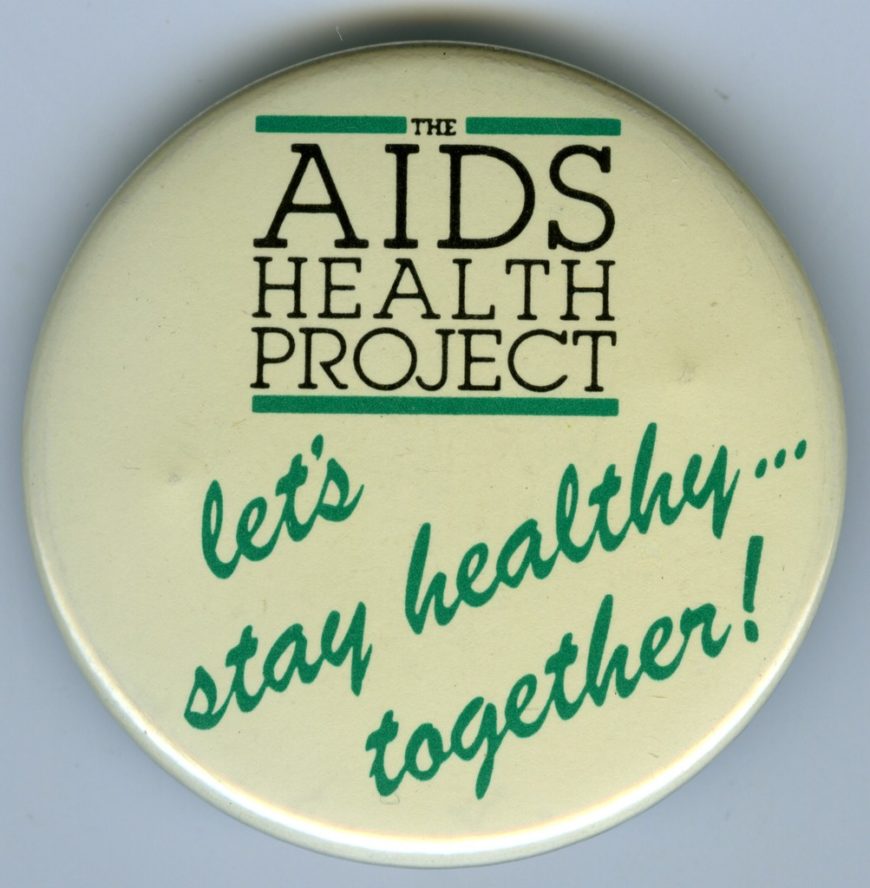
UCSF AIDS Health Project Button, c. 1985-90 (©Regents of the University of California, UCSF AIDS Health Project records, AR 2007-14)
The AIDS pandemic, first identified in the U.S. in 1981, quickly became a polarizing political issue. Fear and ignorance stigmatized those with the deadly disease. Gay activists fought for government action, and for education to prevent the spread of the disease, but the Federal response lagged for years because of the association of the disease with the gay community. By the end of the 1980s, federal funding for research brought advances in treatment that began to save lives.
Environment
Environmental activism grew as the deforestation of rainforests and rapidly expanding industrial and consumer activity continued largely unchecked, and as the scientific community better understood the connection between human activity and global warming. Agricultural chemicals continued to impact land and water quality, and the naturally-arid western region of the United States struggled to meet the water needs of its growing population.

Oil from the Deepwater Horizon oil spill approaches the coast of Mobile, Alabama, 2010 (public domain)
In 1989, an oil tanker dumped 11 million gallons of crude oil into Alaska’s Prince William Sound with devastating consequences to area wildlife. The Exxon Valdez spill was at the time the worst environmental disaster Americans had witnessed (since surpassed by the 2010 Deepwater Horizon spill) and raised awareness of the harm done by fossil fuels. In 1990, the Oil Pollution Act changed regulations for tankers and increased penalties for accidents.
Under President Reagan (and more recently under President Trump), environmental regulations on businesses were loosened, including the Paris Agreement on climate change in 2016, where President Obama committed the nation, along with 190 others, to reducing reliance on fossil fuels and to make efforts to change behaviors that contribute to global warming. Changing weather patterns, increasing hurricanes and forest fires, as well as regular tidal flooding in coastal cities began pushing Americans to rethink harmful behaviors.
America and the world
By the 1990s, American culture had reached around the globe. American businesses, restaurants, movies, and music extolled American values and lifestyles. With the opening of the U.S.S.R. to western culture and business (a policy Mikhail Gorbachev, the last leader of the Soviet Union called “glasnost”), the barriers of the Cold War began to come down, including, in 1989, the Berlin Wall. Globalization brought people around the world closer together through technologies and through shared consumer culture, much of it originating in the U.S.
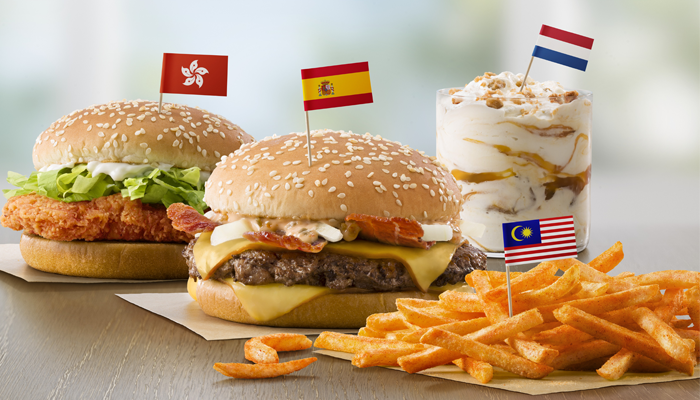
McDonald’s International Menu Items (©McDonald’s Corporation)
But many nations resented American cultural imperialism as well as its military power. Tensions in the Middle East, in particular, intensified. When Iraq invaded Kuwait in 1990, President George H.W. Bush moved to deploy U.S. forces to stop dictator Saddam Hussein — and to protect U.S. oil interests. He then organized U.N. nations to liberate Kuwait. Though the Gulf War was successful, Hussein was not ousted as the leader of Iraq and conflicts in the region multiplied.
On September 11, 2011, hijacked commercial airliners flew into the towers of the World Trade Center in New York. Another hit the Pentagon and a fourth went down in Pennsylvania, missing its intended target. The hijackers were members of the terrorist group, al-Qaeda which had a distinct disdain for the spread of western culture, and which the nations of Afghanistan and Iraq had protected within their borders. The American War on Terror was launched to root out the organization. 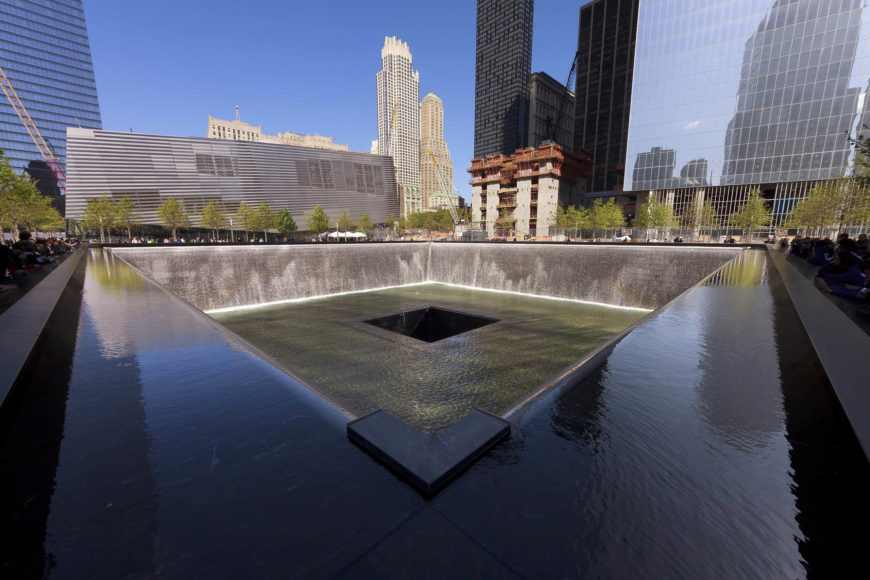
National September 11 Memorial, view of the south pool (photo: NormanB, CC BY-SA 3.0)
The War on Terror brought with it suspicions about loyalties within the United States. In 2001, the USA Patriot Act enabled the government to establish surveillance of all Americans, including cell phone data. Issues regarding digital privacy remain unresolved, as does the regulation of social media platforms. Americans broadly embraced the new technologies of the century’s end, but remain uncertain about their impact on individual lives, on national politics, and on world affairs.
Greater mobility in combination with war, increasing concentrations of wealth, and the impact of climate change have dramatically increased migration around the world. This movement of people, often fleeing desperate circumstances such as civil war in Syria or violence in Central America, has raised the specter of Nationalism around the world and in the United States. Just 30 years after the Berlin wall came down, many American conservatives have backed President Donald Trump’s call for a wall on the southern border of the United States (on land that the United States took from Mexico in the aftermath of the Mexican American War). The United States helped create technologies that have made the world more mobile; now we have to decide if we like the result.
Additional resources:


